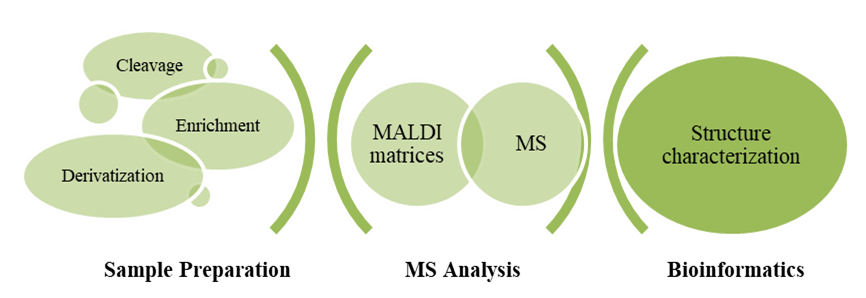Venom N-Glycan Qualitative Analysis
Glycosylation is an important feature of venom, because it can maintain a steady state by increasing the solubility of venom protein, enabling toxic animals to produce a very high concentration of toxic liquid. Among them, N-glycosylation can give protein stability and control protein folding quality.
The high content of glycosylated protein in the venom and its role in different biological systems strongly indicate the importance of research on it. Therefore, in order to help researchers effectively understand the basic information of these active molecules in science and medicine, based on our qualitative analysis, Creative Proteomics provides you with the service of analyzing the structure of N-glycan in the venom of different species.
Our MS-Based Venom N-Glycan Qualitative Analysis
Based on MS, we provide qualitative services to characterize the N-glycan in the venom of different species, and determine their composition and structure by decomposing the N-glycan structure. N-glycan have branched and complex topological structures. These complexities make the qualitative characterization of N-glycan a certain challenge, Creative Proteomics continues to develop new methods and technologies based on MS to apply them in N-glycomics. The specific method of our analysis is as follows.
Method Development
For the venom of different species, such as snakes, scorpions, spiders, frogs, etc., we continue to develop MS-based N-glycan qualitative analysis workflow, including sample purification, digestion, labeling, analysis and other technical methods, including but not limited to the following.
- Cleavage of N-glycan from proteins. The cleavage method mainly uses chemical release and enzymatic digestion, and it is considered to evaluate the cleavage efficiency.
- Enrichment of N-glycan. Commonly used PGC, HILIC, and develop a new enrichment method that can significantly improve the sensitivity and coverage of N-glycan.
- Derivatization of N-glycan. Develop new derivatization methods and improve existing derivatization strategies such as ProA, aminoxyTMT, RapiFluor-MS labeling, etc.
- MALDI matrices. Choose a new materials and high-efficiency MALDI matrix or co-matrix to increase the intensity of the detection signal.
- Chromatographic separation. N-glycan chromatographic separation mainly uses methods such as PGC, RPLC, IEC and HILIC. We have also developed a combination of various methods to perform highly selective characterization of venom N-glycan.
Data Analysis
Venom N-glycan has a complex multi-branched structure, but currently lacks a comprehensive theoretical database and ready-made reference standards, so MS data analysis is particularly important. Creative Proteomics provides data analysis services for de novo reconstruction of the venom N-glycan structure.
You can contact us immediately for help. As a rare professional venomomics research service provider, Creative Proteomics is committed to becoming a reliable and professional partner you can rely on, providing you with first-class services, accelerating the research of venom glycomics and maximizing the application of venom glycan.
Reference
- Xiao K, et al. Mass spectrometry-based qualitative and quantitative N-glycomics: An update of 2017–2018. Analytica Chimica Acta, 2019, 1091.
For research use only. Not intended for any clinical use.


